Welcome to “My Future Projects Planning Page.” This is a new page that I added to my website for 2025, where I will provide you some insight to any future projects (Balsa RC model, or Stained Glass) that I might have in the planning stage. If anyone has some suggestions, recommendations, or questions about a project, please feel free to contact me @: Future Project Input.
NOTE - You can view all images using a “Spotlight Box” by simply clicking on any image.
Click on a link below to jump to that Project Section
Hot Air Balloons Stained Glass Panel
When I first started making Stained Glass panels, after a couple small panels I wanted to try my hand at something larger, but not with a hundred small pieces. After some initial ideas I drew up a pattern for a single hot air balloon which turned into the panel in the left image below. The panel measures 22″ x 28″ and only has 53 fairly large size pieces of copper foiled stained glass. This panel was given to my parents in Florida where it hung in their home for many years and now hangs in the sunroom of our North Carolina home.
Having always liked hot air balloons because of their variety in design and colors, I want to come up with a new Stained Glass panel design that has many different types of balloons participating in an event flying over a gentle rolling landscape. Something similar to the right image below, but with more variance in the balloon patterns.
This posting is as of 12 March 2025. To start, I will size this new panel to measure 30″ wide by 20″ high, which will allow me to have several balloons at different altitudes spread across a wide view. This panel size may change once I come up with a couple initial balloon patterns and can visualize the sizes of the individual glass piece. My next step was to work up some balloon patterns using my computer drawing program “Back To The Drawing Board.”
Using several images from my web search for hot air balloons, I reworked them in the drawing program so I would not have too many tiny pieces to cut, grind and copper foil. I decided to us a mix of both “vintage” and modern style hot air balloon patterns. The image below is my first cut at a Stained Glass pattern for this new panel. Not all the lines in this pattern will be glass piece edges. I plan to use copper wire to form the square paddles on the large power wheel, several of the wires that attach the boat to the balloon, and some lines to the gondola in lower left corner of the panel. In the areas where balloons overlap, I edited out the lines for the balloon in the background. Currently, I think I will use Double Glue Chip clear glass for the panel open sky pieces. Stay tuned for more to come.
Hot Air Balloons Stained Glass Panel Pattern.
Latest Version of Hot Air Balloons Stained Glass Panel Assembly Description.
Andy Clancy's Bee Liner Scratch Build Planning
I only have one multi-engine RC model build under my belt, and that being my “Big Double Trouble” which you can see @ Big Double Trouble. I am not wanting to tackle a major build that has four glow engines (like a B-17) and would be too large to fit in the bed of my Colorado pickup. Just something along the line of a multi-motor sport model in the 48″-62″ wingspan size range. So, after building and flying my Andy Clancy Speedy Bee, and just finished building a Clancy Stagger Bee, I figured I would try my hand at some modifications and a scratch build of Andy Clancy's “four motor” Bee Liner shown below.
Source of Images: November 2017 issue of Model Airplane News.
Designed by the father of the Lazy Bee, Andy Clancy, the Bee Liner is a multi-motor version of the classic sport flyer with a bit of 1930s retro added in for good measure. A quote from Andy Clancy - “Let me introduce you to The Bee Liner, a plane whose finest trick is just sitting stationary, taking a break. It is reclining in the air.
You can do this stunt easily. The Bee Liner is kept so supremely airborne because it has four propellers blowing their air over its wing. Fly it along at a slow pace under power and then suddenly cut the throttle. This will cause a sudden stall. As long as those props are spinning, the air is flowing, the wing is lifting, and the Bee Liner is flying in place. The plane is creating its own breeze to fly on. Then, if you are the dramatic type, stop the props. That lift provided by the prop wash ceases instantly, so the plane falls. The onlookers gasp. (Be warned! If you performed this maneuver too close to the ground, you will end up with a new airplane “kit”!).
Flying this plane is fun and exciting. It's a Bee, after all! The Lazy Bee series of planes was meant to be particularly versatile in the sense that they could be docile for beginners, yet capable of providing challenging stunt-flying to an expert pilot. The Bee Liner is no exception. Stalls with the Bee Liner are predictable and gentle with an immediate recovery. Response to stick and throttle is quick and powerful. If you take your hands off the controls, the Bee Liner will quickly go to straight and level from any “nightmare” attitude. Performing any maneuver requires only a small space and little time. Flying at its slowest takes a little experimenting with technique.
It's even fun to watch. Its wide chord wing and the chubby fuselage make it easy for the eyes to follow it when it's far up and away. The nice synchronous hum of the four motors and props are amplified by the drum-like wing. You know: Oversized control surfaces, hands-off stability, extremely low minimum flying speed, and easy aerobatics.”
- Bee Liner Model Specifications:
- Aircraft Type: Multi-Motor Sport Flier
- Wingspans: 51″
- Wing Chord: 10″
- Total Wing Area: 448 sq. in.
- Wing Location: Low Wing
- Wing Dihedral: 2.25″ at wingtips.
- Stabilizer Span: 18.6″
- Total Stab Area: 100 sq. in.
- Rudder Height: 6.5″
- Rudder Area: 21 sq. in.
- Fuselage Length: 32.25″
- Fuselage Width: 3.45″
- Rec. No. of Channels: 4 - Throttle, Elevator, Rudder, and Ailerons.
- Weight: 28 oz. - 46.5 oz. depending on power system selected.
- Wing loading: 9 - 15 oz./sq. ft.
- Glow engines: N/A.
- Electric Powered: Output of 100 watts per brushless motor; 20A brushless ESCs; 3-cell LiPo pack sized up to 3,300 mah.
I start my Bee Liner scratch build planning using a great set of Andy Clancy Aviation Bee Liner plans, and Andy's Bee Liner Construction Article in the November 2017 issue of Model Airplane News which you can be obtained by contacting Andy @: "Andy Clancy Designs." You will NOT find Bee Liner plans on any of the “Free Plans” websites.
This posting is as of 17 January 2025 and I updated my “Bee Liner Build Description” which you can view and download using the link provided below. Also, the “Bee Liner Materials and Hardware List” link below contains all the materials and hardware required to build my Bee Liner. I will update this list as I proceed through my project planning.
This scratch build will be my first four-motor RC model build, so I am really excited about what new things I will learn along the way. Using the Andy Clancy Bee Liner plans, I determine what materials I will need to make my scratch build. Once I have a complete wood and material list, any balsa sticks and sheets, basswood sticks, and plywood needed are ordered from Balsa USA (https://balsausa.com/). The four Hitec HS-81 16.6g Nylon Gear Analog Micro Servos, Spektrum AR620 6-Channel RC Sport Receiver, main landing gear wheels, steerable tail wheel assembly, and all other required hardware can easily be located on the web or purchased from your local hobby shop. Based on excellent recommendations from Lucien Miller, President & CEO of Innov8tive Designs, Inc., to power this little beauty I plan to use a BadAss Power System that puts out a total of approximately 320 watts, which is equivalent to a single 0.15 two-cycle glow engine. Yes, I am building yet another electric powered model. I know that is hard to believe. This BadAss Power System is comprised of the following components: 4 - BadAss 2305-1050Kv Brushless Motors; 4 - BadAss Rebel V2 Lite Series Brushless 20A ESCs; 1 - BadAss 45C 3,300mah 3S LiPo Battery; 2 - APC 7x6E Propellers (Normal Rotation); 2 - APC 7x6E Pusher Propellers (Reverse Rotation); and 4 - M5 x 0.8mm Thread Spinner Nuts. You can purchase the system and other components needed for the wiring harnesses (see image below) from: Innov8tive Designs.
For an RC model of this size, the BadAss BA-2305-1050 motors work well using a 3-cell LiPo battery with 7-inch props. The motors weigh 1.44 ounces each and add in the weight of the prop adapter and cross mount they come in at 1.9 ounces each, so a set of four would be 7.6 ounces. The little BadAss Rebel Lite 20-amp ESC's weigh 0.46 ounces each, so a set of four would be 1.84 ounces. The BadAss 45C 3,300mah 3S LiPo battery weighs 11.5 ounces, so the total for the battery, four motors and four ESC's is right at 21 ounces. The covered airframe with servos should come in around 24 ounces, so the estimated weight of the complete Bee Liner model should be around 45 ounces. This is at the top end of the weight range, but still very flyable with 14 oz./sq. ft. wing loading.
- With APC 7x6-E props, the following are the full throttle performance numbers for four motors:
- Volts: 11.1
- Amps: 28.6
- Watts: 320
- RPM: 9,166
- Thrust: 57 ounces
- Speed: 52 MPH
With the Bee Liner at 2.8 pounds, this results in a power loading of 114 watts per pound with a thrust to weight ratio of 1.27 to 1. This should provide very good short field takeoff power and the ability to climb straight up if wanted. Throttled back to 50% throttle, which is where I will spend most of my time in the air, the power system will only pull a total of around 8-9 amps, which should get me 15 minute flights from the 3-cell 3,300 LiPo battery with reserve left over. My resulting Bee Liner Wing Wiring Diagram can be seen in the image below.
I want to modify the wing to use a bolt-on mount versus the rubber bands shown on the plan. I also need to build an ESCs bay in the wing center section with a hatch on the wing upper surface. So, I make the required changes to the wing structure on the Bee Liner wing plan (sheet 3 of 3). You can do this by drawing directly on the plans with pencil and ruler, or you can take the wing PDF plan sheet and generate an SGV (Scalable Vector Graphics) file which can then be modified using your favorite CAD program. I will use the latter method with my “Back To The Drawing Board” 2D-CAD program (https://drawingboardapp.com/). You can see these changes in the next two images below.
The modifications for a bolt-on wing also drives changes to the Bee Liner fuselage structure. Additionally, by placing the ESCs in the center wing section and routing the power harness up through the top of the wing to connect to the LiPo battery in the fuselage, I need to move the elevator and rudder servos further aft in the fuselage. This requires that I make the fuselage battery hatch longer so I can easily access the servos. Using the same method as I used on the wing plan, all the required fuselage modifications were made to the fuselage plan (sheet 1 of 3). You can see my modifications in the next image below.
If you have any questions about this build, please feel free to send me an email @: Bee Liner.
Latest Version of My Bee Liner Build Description.
Latest Version of Bee Liner Materials and Hardware List.
Bee Liner Wing Wiring Diagram.
Modified Bee Liner Wing Ribs.


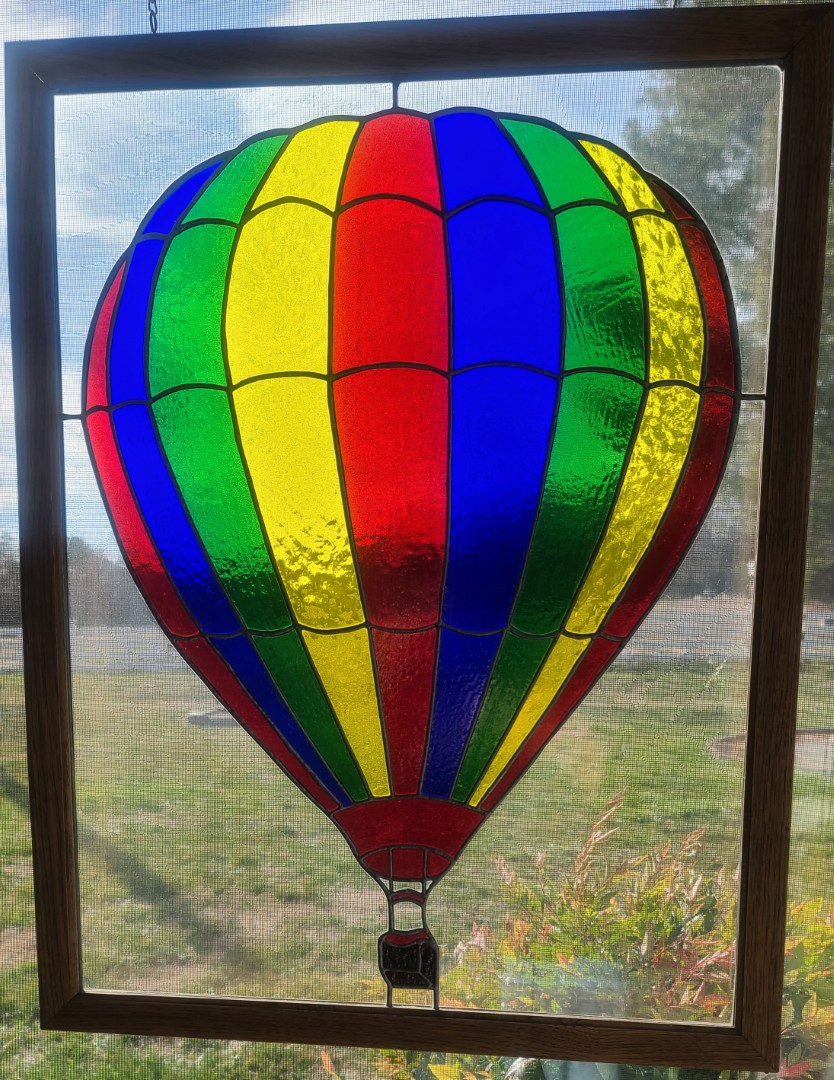
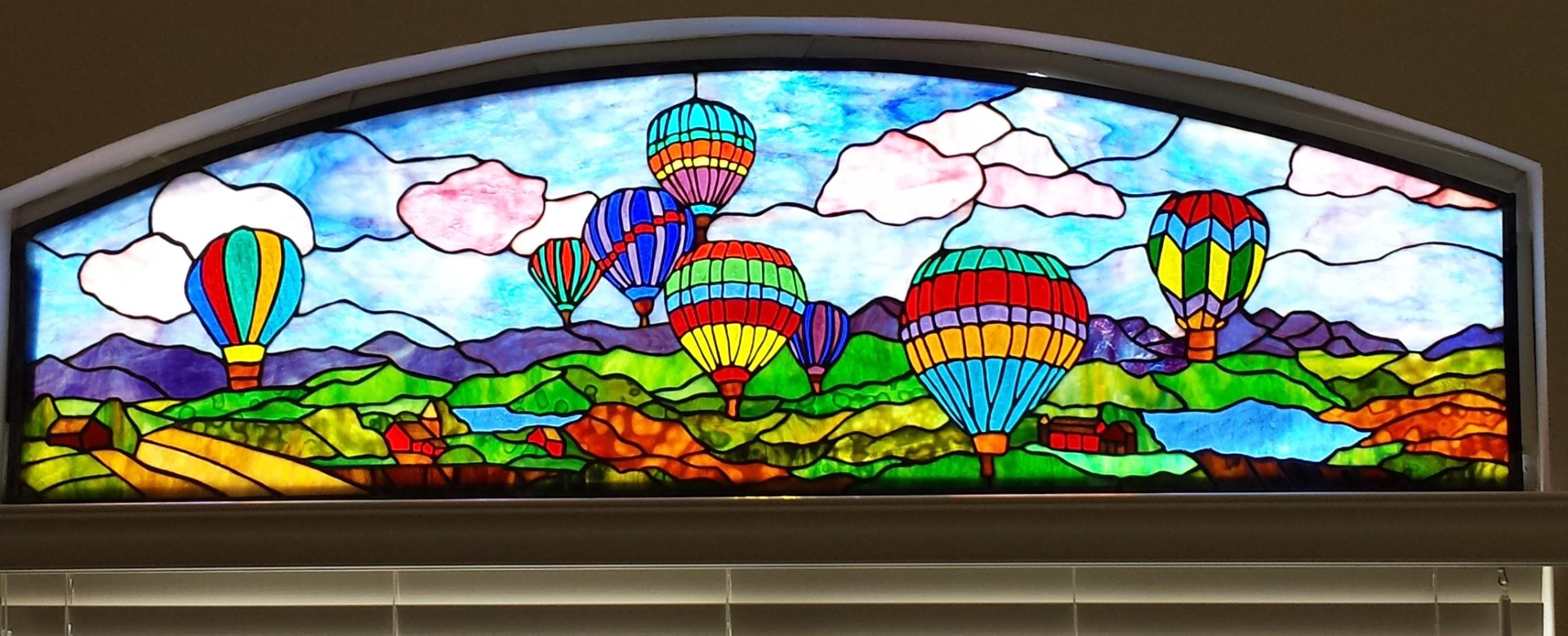
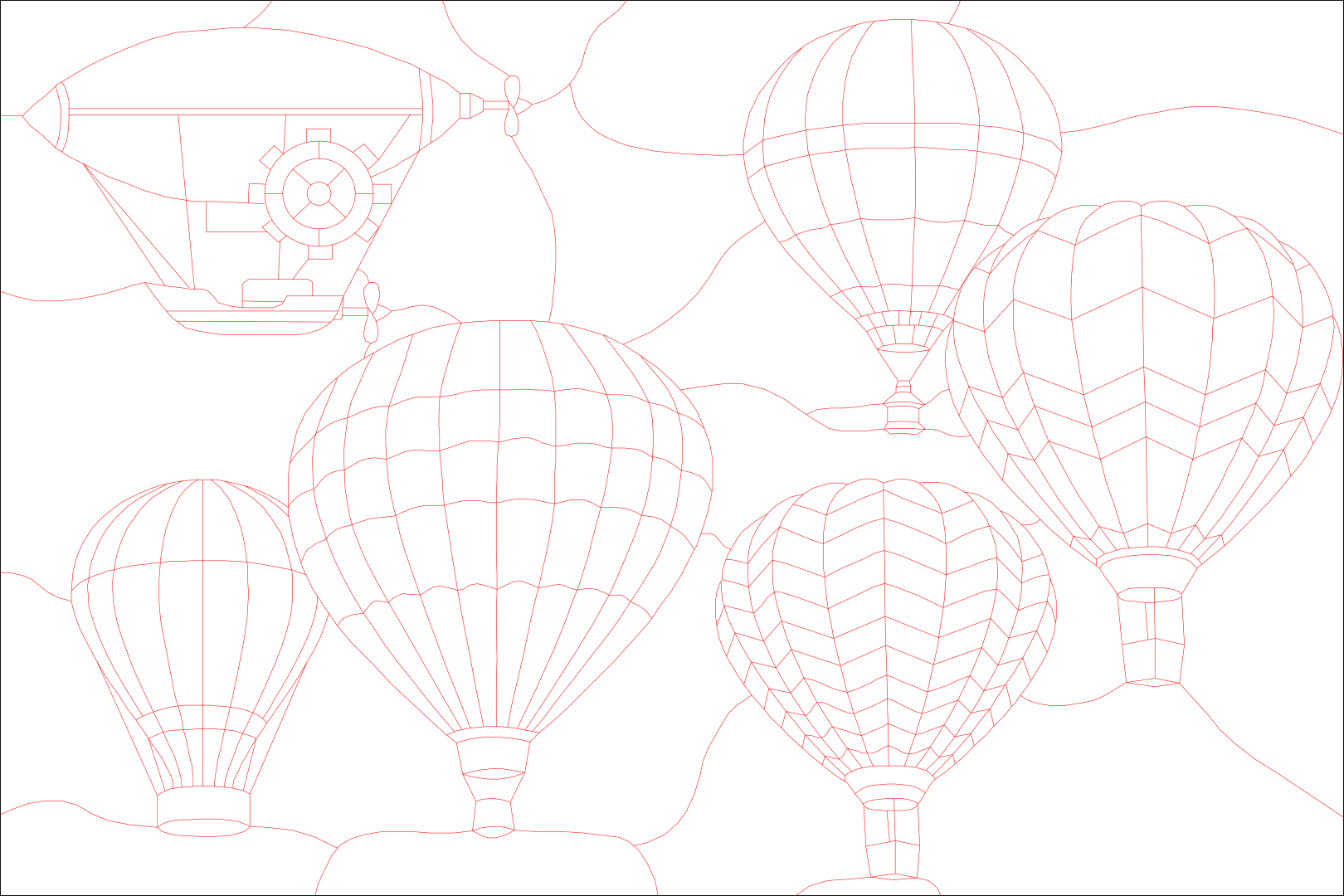
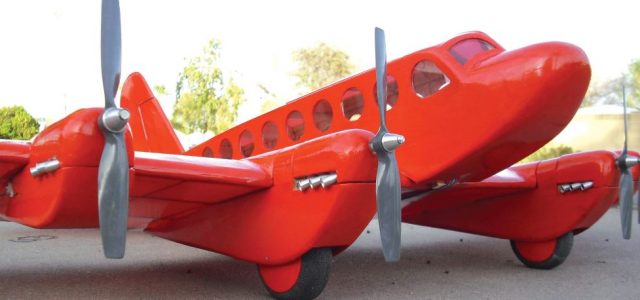
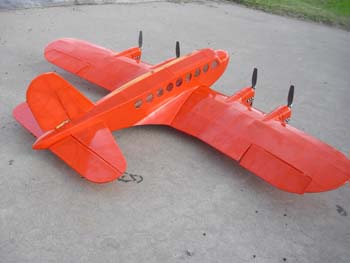
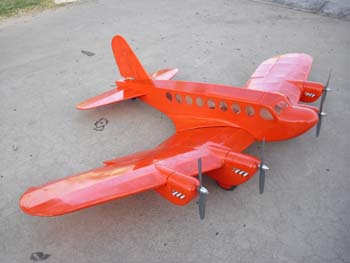
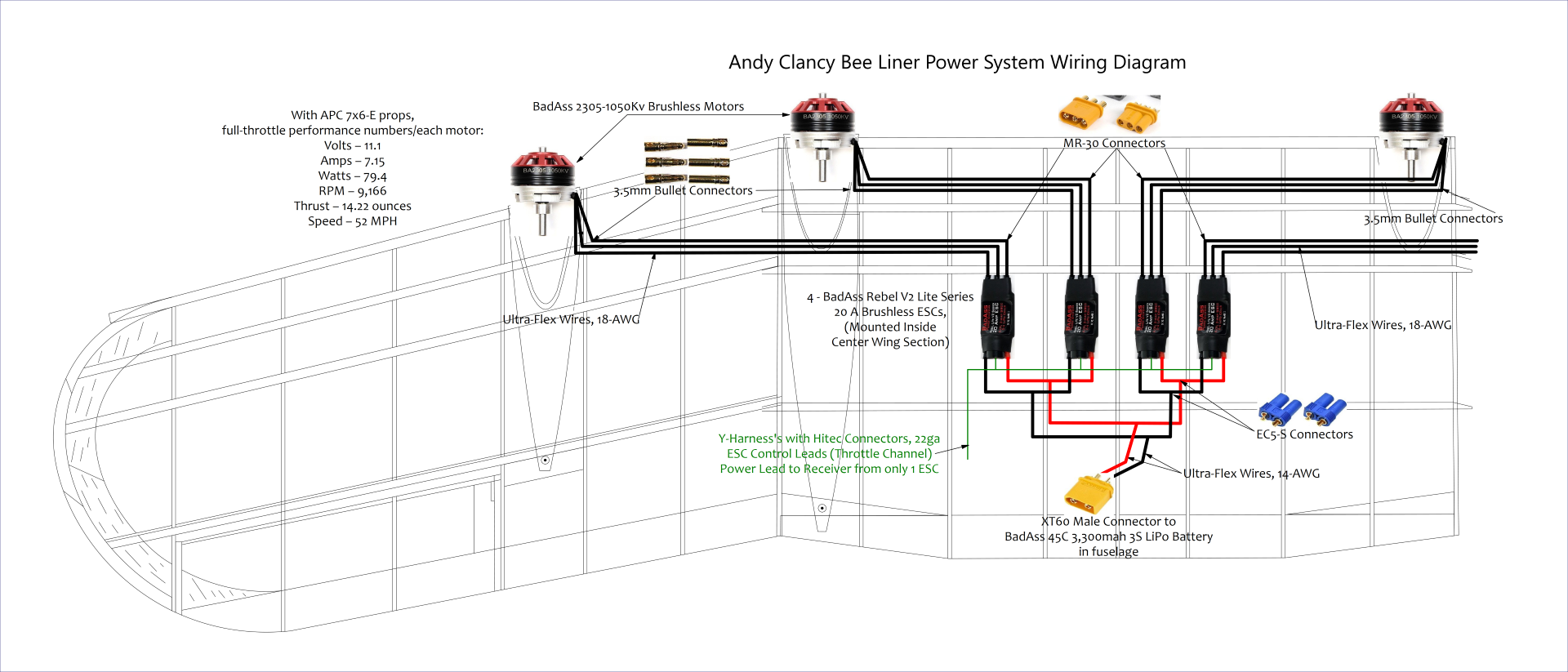
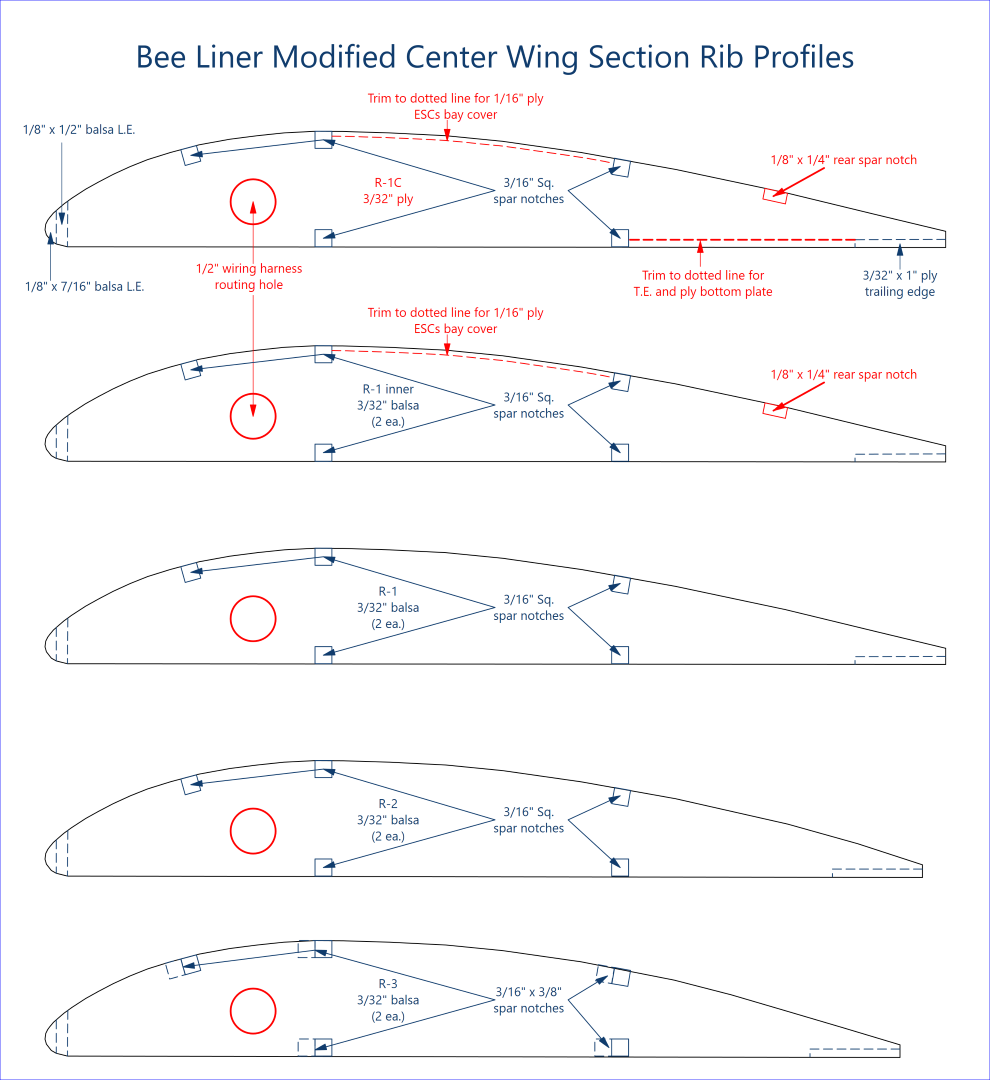
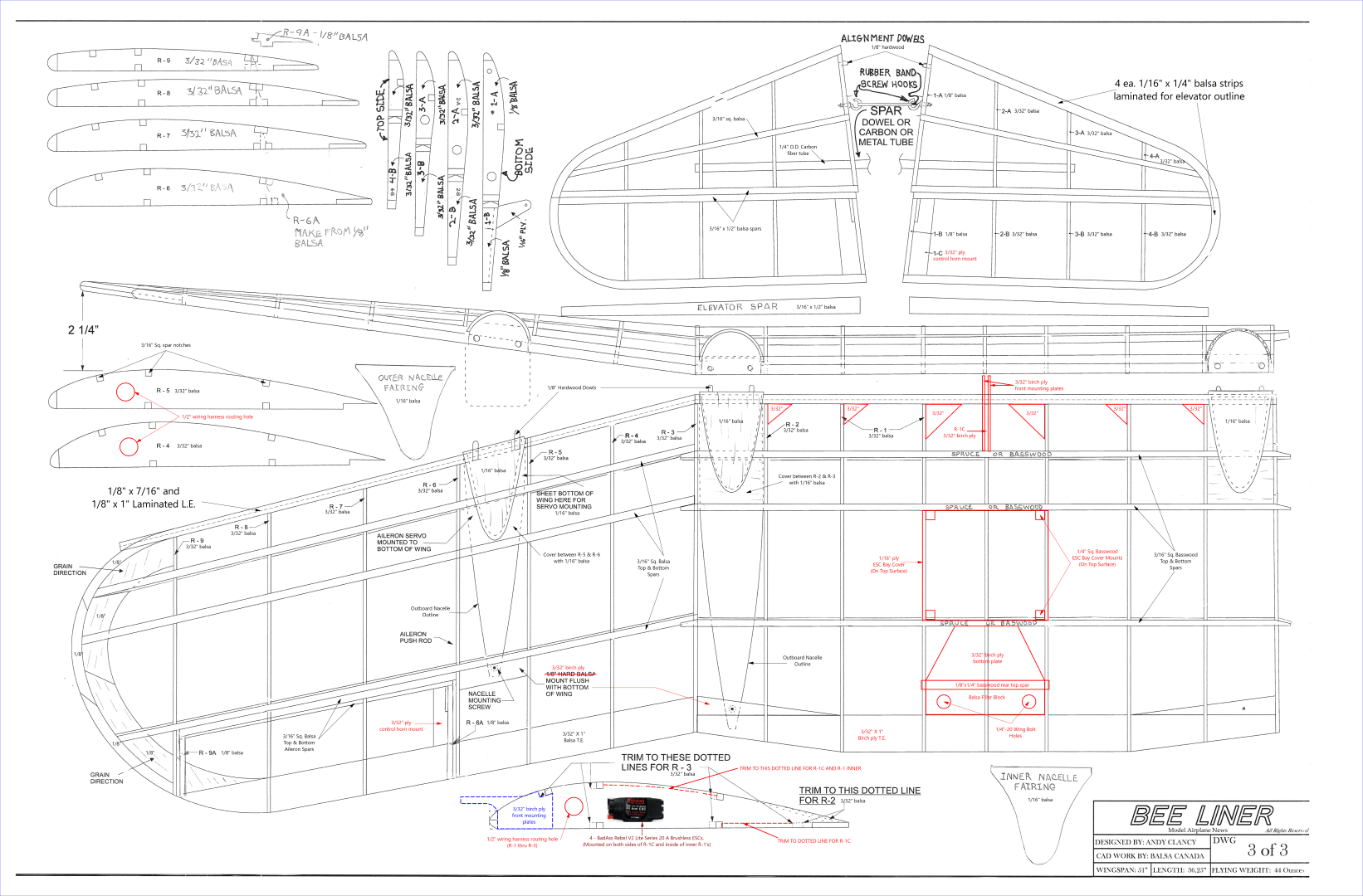
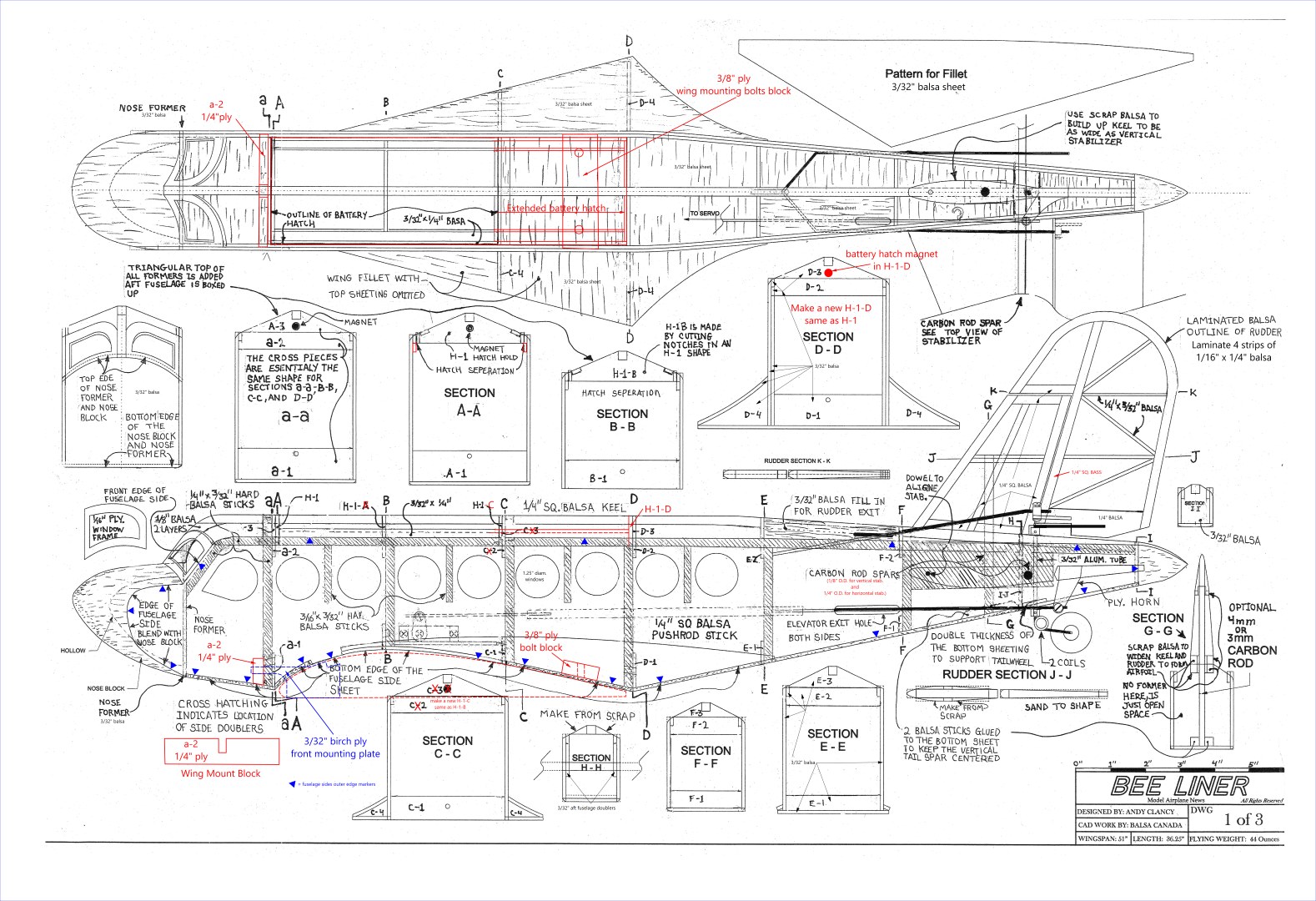
 All HTML & CSS Coded by Larry
All HTML & CSS Coded by Larry